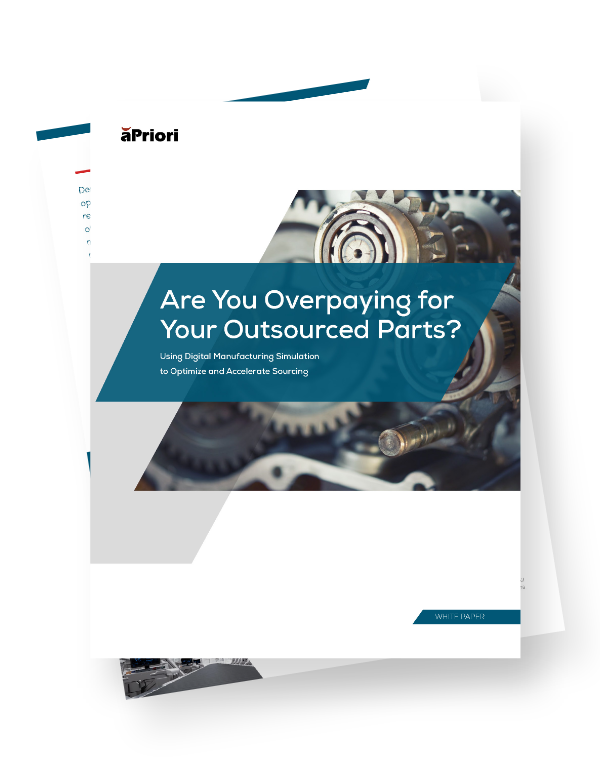EU Manufacturer Captures Savings Despite Energy Price Increases
European manufacturers are facing exponential energy price increases and inflationary pressures, pushing them to seek alternative manufacturing processes to remain competitive in the market. As these issues persist, how can manufacturers in the European Union (EU) and the United Kingdom (UK) maintain profit margins amid high energy costs?
To address these challenges, one EU manufacturer is using aPriori’s manufacturing insights to determine if higher supplier component costs are in line with “should cost” increases associated with higher energy prices. Using aPriori’s manufacturing insights, the EU manufacturer achieved double-digit cost avoidance with a key supplier despite energy price increases.
Multiple Drivers of European Energy Price Increases
Beyond the geopolitical situation in Eastern Europe, other factors or disruptions are causing inflation in the EU and globally. Here are two additional trends that are driving energy price increases in Europe:
1. Rising Global Energy Demand
The global market for energy grew as economies emerged from the COVID-19 pandemic. The International Energy Agency (IEA) reports that the global demand for electricity has increased by 5% in 2021 and 4% last year. Most of this demand comes from Asia-Pacific countries like China, which is also set to increase its total energy demand by 3.3 million barrels of oil per day. Large global energy demand from populous nations only worsens the energy crisis in Europe.
Since the brutal, frigid spring temperatures of 2021, gas supplies across Europe have dwindled. During this time, it is estimated that European gas consumption increased by 25%, resulting in higher energy prices due to limited supply. Natural gas shortages in the EU have been compounded by geopolitical tensions. This has only raised demand for natural gas energy, despite its limited availability across EU member states.
2. Drastic Weather Conditions and Climate Change
The growth of renewable energy initiatives in the EU is gradual, forcing member states to continue to rely on imported energy. Due to its overreliance on imports, the EU is now exploring and investing in more renewable energy avenues, such as hydro and wind power.
However, it is critical to consider how climate change may affect green energy alternatives and their overall effectiveness through the years. The unpredictability of global warming makes the expansion and implementation of new energy initiatives challenging for the EU and around the world.
Heatwaves in several European countries added pressure on energy infrastructure, as demand for air conditioning drove up electricity prices. Further, it is reported that wind generation in the EU is significantly hampered due to inadequate or suboptimal wind conditions.
Case Study: Leveraging aPriori Insights for Cost Avoidance
An aerospace parts manufacturer headquartered in central Europe was facing increased supplier pricing due to energy price inflation. The customer’s challenge was to assess how much of the supplier’s price increase is reasonable while also capitalizing on potential savings.
The manufacturer uses aPriori’s automated cost modeling solution to simulate the total cost of a given component when it is manufactured and distributed efficiently. It accounts for factors including labor, manufacturing process, materials, overhead, and profit margin. aProri’s should cost solution helps companies identify cost outliers, which is essential for effective supplier negotiations. This is especially important during periods of market volatility such as the current Eurozone inflationary climate.
Conducting Should Cost Analysis
aPriori’s European-based customer received a new quote from a strategic supplier that included a 19% increase for a critical component due to an energy surcharge. The manufacturer leveraged aPriori to assess the validity of the proposed increase and its impact on overall product cost.
The manufacturer performed two sets of aPriori estimations: the first using February 2022 energy and economic rates and the second using July 2022 rates. The manufacturer’s aPriori analysis revealed a 37% increase in kilowatt-hour (KWh) costs in the supplier’s country.
Securing 14% Savings With Should Cost Insights
The manufacturer also determined that the price increase only translated to a 3-5% total cost increase – not the 19% increase the supplier proposed. Using aPriori cost insights, the manufacturer successfully negotiated a 14% reduction in the supplier’s quote.
The manufacturer intends to employ should cost analysis with other suppliers to uncover additional cost savings and cost avoidance. The customer’s cost-saving victory demonstrates EU manufacturers’ ability to mitigate costs in the face of rising natural gas and crude oil prices, as well as other global disruptions.
How to Fight Rising Inflation and Reduce Costs in 2023
Due to energy price increases and restricted energy supply, EU manufacturing companies require an innovative, transformative way to capture savings. Manufacturers in the EU and globally can leverage aPriori to generate precise, fact-based data for successful cost collaboration with suppliers. aPriori not only enables EU manufacturers to conduct transparent supplier negotiations, but also to handle energy market challenges more effectively.
Are You Overpaying for Your Outsourced Parts?
Learn how to identify which parts are driving cost inefficiencies, prioritizing them, and finding a more efficient supplier price.







